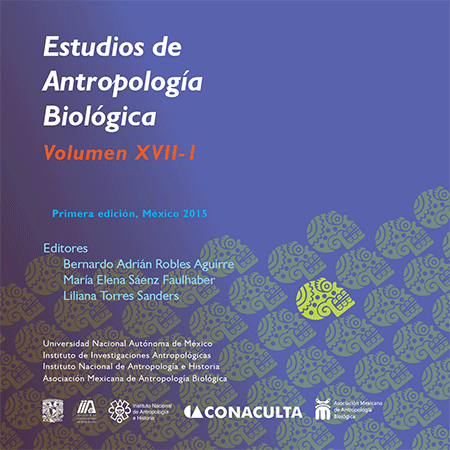Sex determination in calcaneus bone from Mexican populations through discriminant functions
DOI:
https://doi.org/10.22201/iia.14055066p.2015.56840Keywords:
Calcáneo, funciones discriminantes, determinación de sexo, osteología forenseAbstract
Discriminant analysis is a statistical tool of support in the identification of characteristics in order to differentiate between two or more groups, that is why its frequent application in the subject of sexual dimorphism in the field of anthropological osteology, especially when materials are on unfavorable conditions of conservation, in isolated and even incomplete contexts. In this case, the maximum length and the average width of the calcaneus bone of 90 individuals of the female sex and 94 of male sex was measured with known biographical details, the skeletal population from a cemetery of Caltimacan, Tasquillo, Hidalgo State. Three discriminant functions, two of them direct and with a certainty of 68.5-76.6 % percentages were obtained as a result. The maximum length of the calcaneus bone turned out to be the variable more dimorphic, however the combination of both measures increased the percentage of certainty to a 78.1 %. Although the percentage is not as high, stays with a safe level of reliability. The result of this work is relevant not only for the determination of sex in the study of the Mexican past populations, but also in the identification of skeletal remains of individuals not identified in forensic contexts.
Downloads
Downloads
Published
How to Cite
Issue
Section
License

http://creativecommons.org/licenses/by-nc-nd/4.0/


